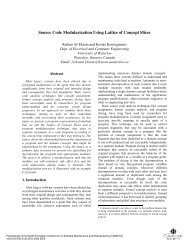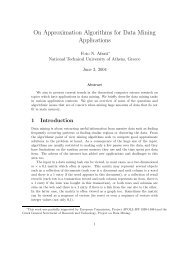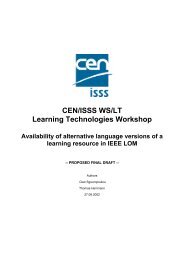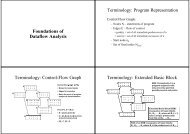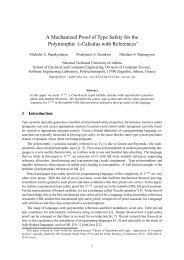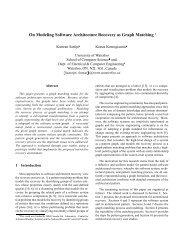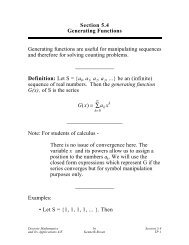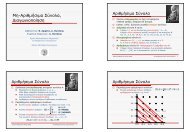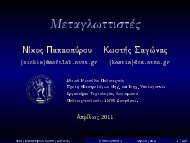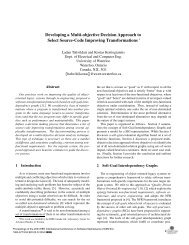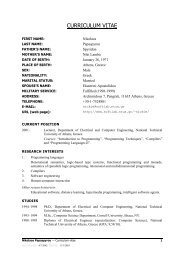Manual
Manual
Manual
Create successful ePaper yourself
Turn your PDF publications into a flip-book with our unique Google optimized e-Paper software.
Appendix B: Glossary 125<br />
Reverse polish notation<br />
A language in which all operators are postfix operators.<br />
Right recursion<br />
A rule whose result symbol is also its last component symbol; for example,<br />
‘expseq1: exp ’,’ expseq1;’. See Section 3.4 [Recursive Rules], page 45.<br />
Semantics<br />
Shift<br />
In computer languages, the semantics are specified by the actions taken for each<br />
instance of the language, i.e., the meaning of each statement. See Section 3.5<br />
[Defining Language Semantics], page 46.<br />
A parser is said to shift when it makes the choice of analyzing further input from<br />
the stream rather than reducing immediately some already-recognized rule. See<br />
Chapter 5 [The Bison Parser Algorithm], page 71.<br />
Single-character literal<br />
A single character that is recognized and interpreted as is. See Section 1.2<br />
[From Formal Rules to Bison Input], page 12.<br />
Start symbol<br />
The nonterminal symbol that stands for a complete valid utterance in the language<br />
being parsed. The start symbol is usually listed as the first nonterminal<br />
symbol in a language specification. See Section 3.7.9 [The Start-Symbol],<br />
page 58.<br />
Symbol table<br />
A data structure where symbol names and associated data are stored during<br />
parsing to allow for recognition and use of existing information in repeated uses<br />
of a symbol. See Section 2.5 [Multi-function Calc], page 34.<br />
Syntax error<br />
An error encountered during parsing of an input stream due to invalid syntax.<br />
See Chapter 6 [Error Recovery], page 83.<br />
Token<br />
A basic, grammatically indivisible unit of a language. The symbol that describes<br />
a token in the grammar is a terminal symbol. The input of the Bison parser<br />
is a stream of tokens which comes from the lexical analyzer. See Section 3.2<br />
[Symbols], page 42.<br />
Terminal symbol<br />
A grammar symbol that has no rules in the grammar and therefore is grammatically<br />
indivisible. The piece of text it represents is a token. See Section 1.1<br />
[Languages and Context-Free Grammars], page 11.



